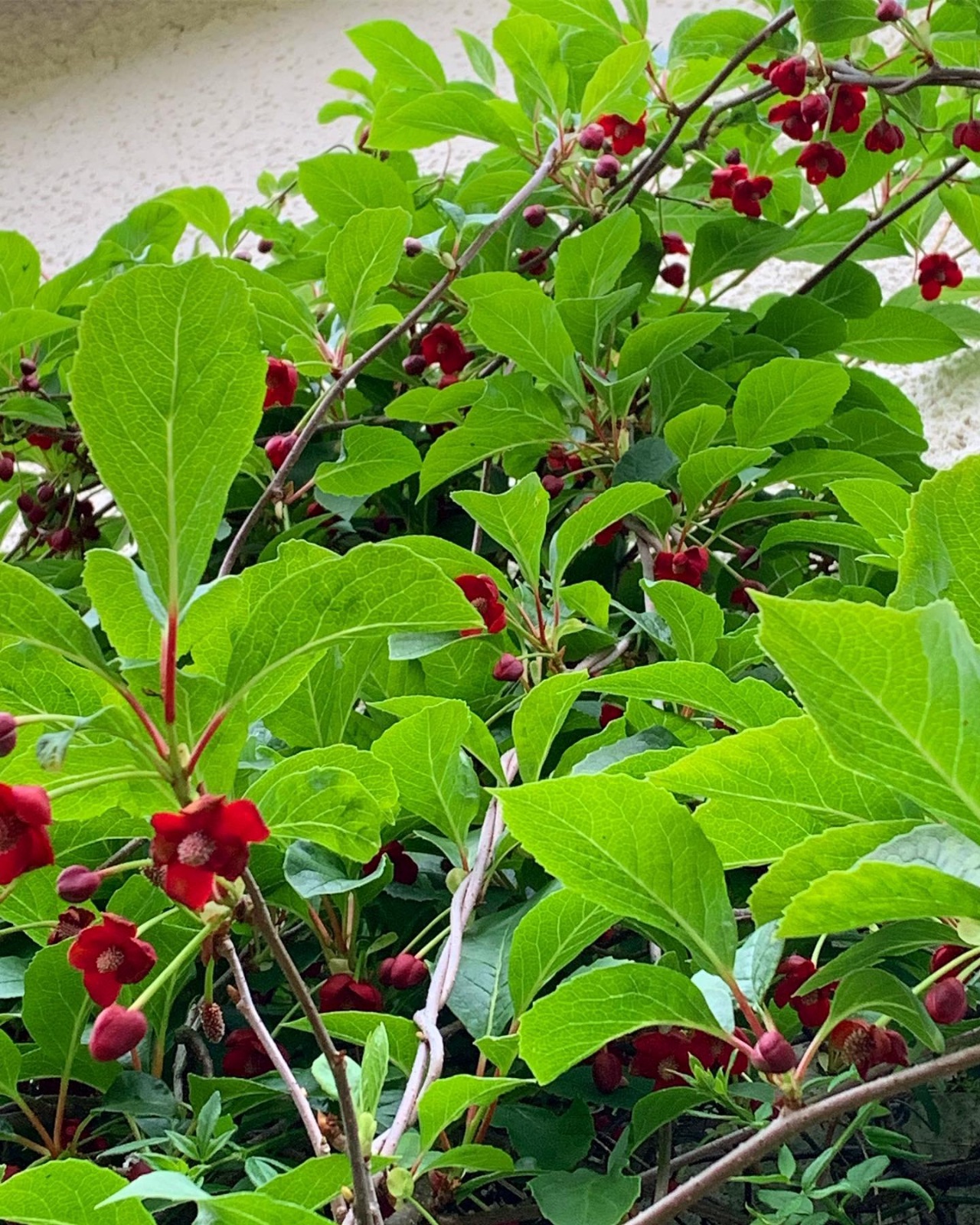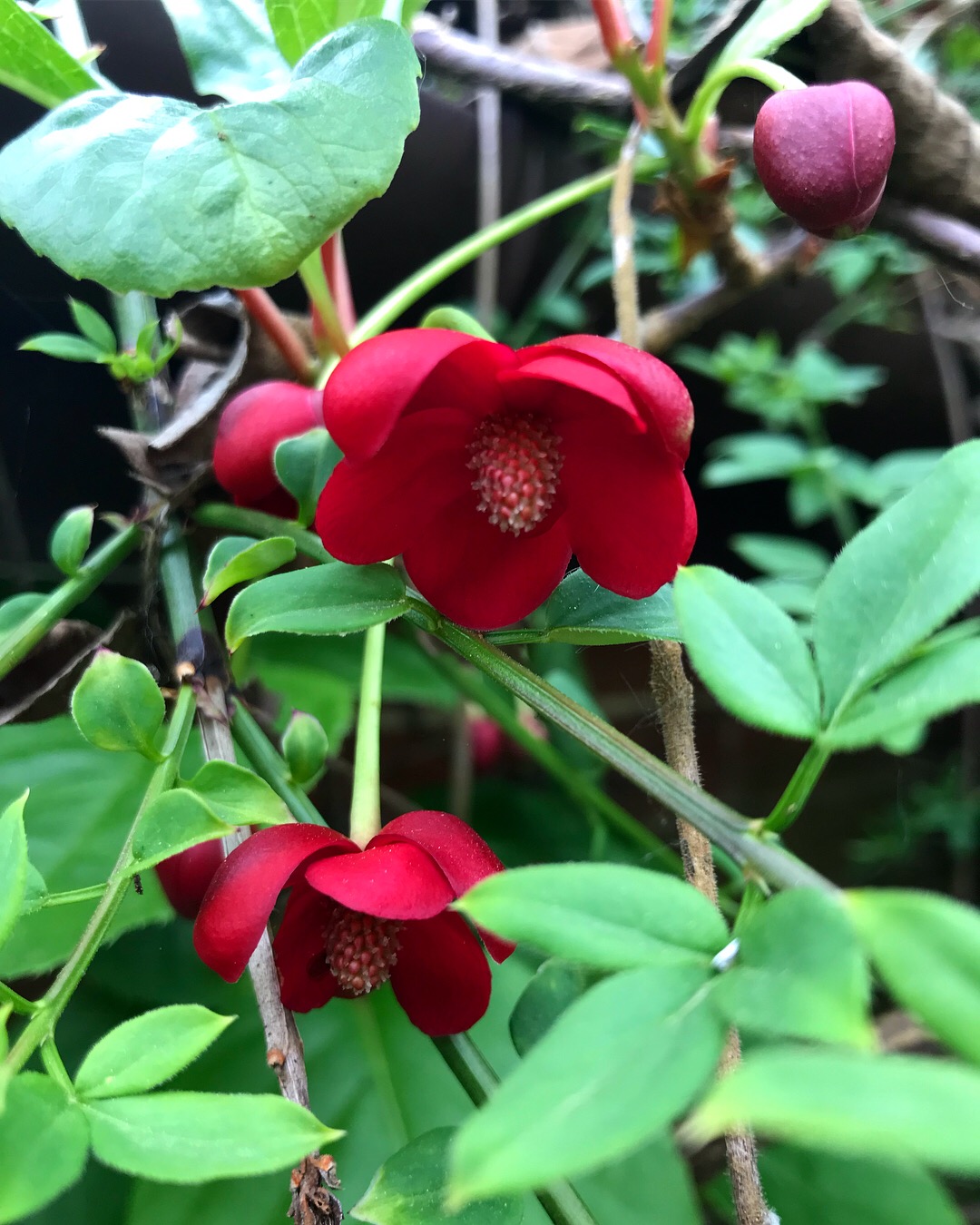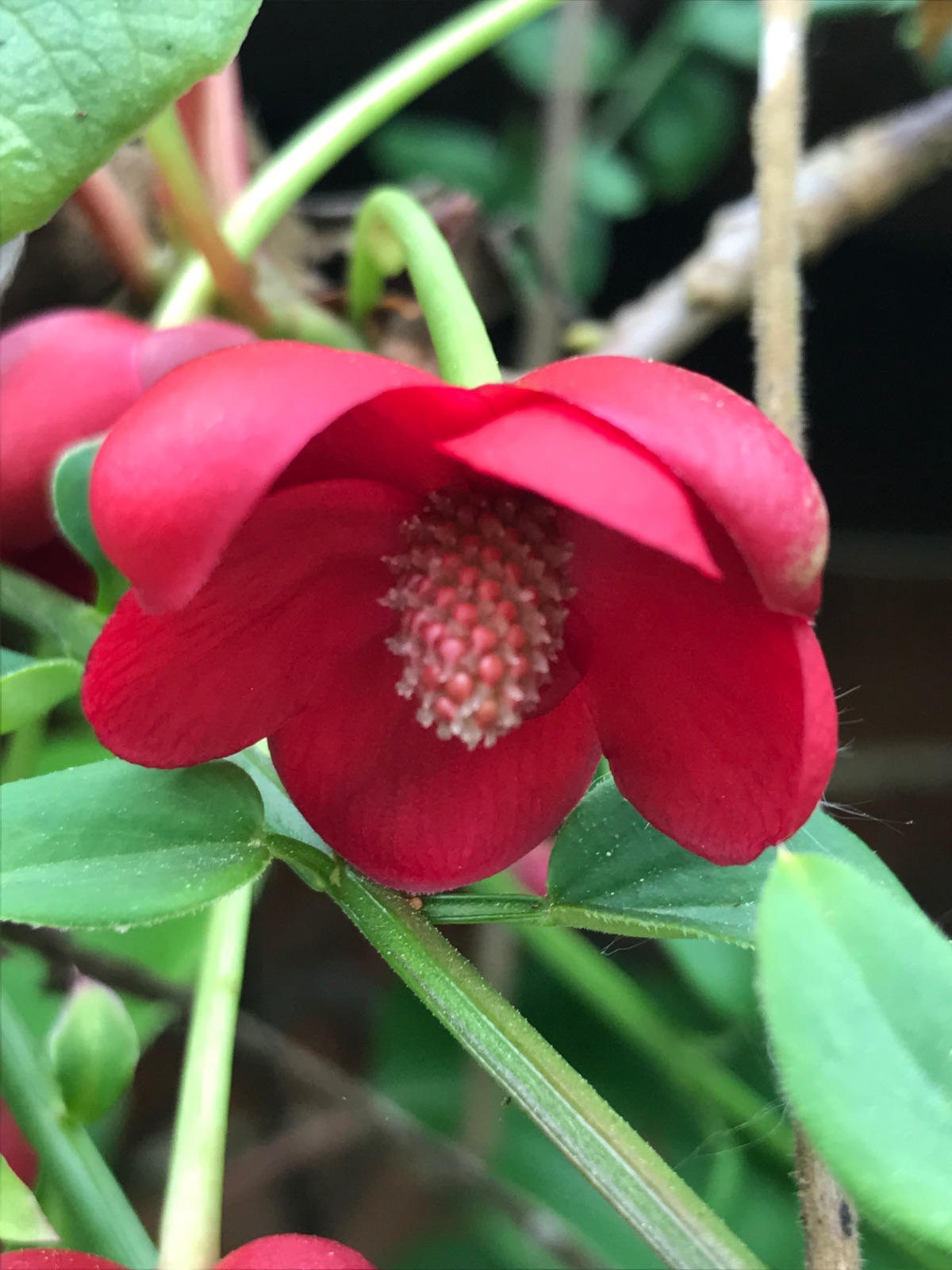Schisandra rubriflora
Credits
Article from Bean's Trees and Shrubs Hardy in the British Isles
Recommended citation
'Schisandra rubriflora' from the website Trees and Shrubs Online (treesandshrubsonline.
Genus
Synonyms
- S. chinensis var. rubriflora Franch.
- S. grandiflora var. rubriflora (Franch.) Schneid.
- S. grandiflora sens. Franch., not Hook. f.
A climbing deciduous shrub 10 to 20 ft high; young shoots slender, glabrous, at first reddish. Leaves mostly obovate, sometimes approaching oval, pointed, tapered at the base, toothed, 21⁄2 to 5 in. long, 11⁄2 to 21⁄2 in. wide, quite glabrous; stalk 1⁄2 to 11⁄2 in. long. Flowers unisexual, solitary in the leaf-axils at the base of the new shoots, 1 in. wide, deep crimson, each on a slender, pendulous, red stalk 1 to 11⁄2 in. long. Sepals and petals five to seven in all, roundish. Fruit composed of roundish red carpels thickly disposed on the terminal half of a pendulous, red, slender stalk 3 to 6 in. long, each carpel about the size of a pea and containing two seeds. Bot. Mag., t. 9146.
Native of W. Szechwan, China, thence ranging south and west as far as N.E. India; discovered on Mt Omei by E. Faber about 1887; introduced by Wilson in 1908. This is a handsome climber as regards both flowers and fruit, the former hanging downwards and in the bud state resembling ripe cherries. It is quite hardy and is now well established in cultivation; it can be trained on a wall or up a stout stake or pole. The fruit, which seems first to have been fully developed at Aldenham, Herts, in 1925, is ripe in September. The species was given an Award of Merit by the Royal Horticultural Society on September 22, 1925. Blooms in April and May.
S. rubriflora may also be in cultivation from seeds collected by Kingdon Ward in 1928 in the Mishni Hills, Assam.
S. grandiflora (Wall.) Hook. f. Kadsura grandiflora Wall. – S. rubriflora is perhaps no more than a geographical variant of this species, described in 1824, which ranges from the central Himalaya into China. Chiefly it differs from R. rubriflora in its white or sometimes light pink flowers.
S. incarnata Stapf S. grandiflora sens. Rehd. & Wils., not Hook. f.; S. grandiflora var. cathayensis Schneid., in part – Very near to S. grandiflora but recognised as a distinct species by A. C. Smith in his monograph. It differs in its always flesh-pink flowers (commonly white in S. grandiflora) on shorter pedicels and the male flowers with fewer stamens. From R. rubriflora it is obviously distinct in the colour of its flowers. Introduced by Wilson from W. Hupeh, China, first for Messrs Veitch, later, in 1967, for the Arnold Arboretum (W. 318, as S. grandiflora).
S. sphaerandra Stapf S. grandiflora var. cathayensis Schneid., for the greater part – From R. rubriflora and other species mentioned above this differs in the narrower and shorter leaves, which are lanceolate, oblanceolate or narrow-oblong, and in the almost sessile anthers borne on a swollen receptacle. The flowers vary in colour, but are usually in some shade of red or magenta. Described in 1922 from specimens collected by Forrest in the Lichiang range of N.W. Yunnan, and by Schneider and Handel-Mazzetti in S.W. Szechwan. The S. grandiflora var. cathayensis of Schneider is mainly this species but partly S. incarnata.



